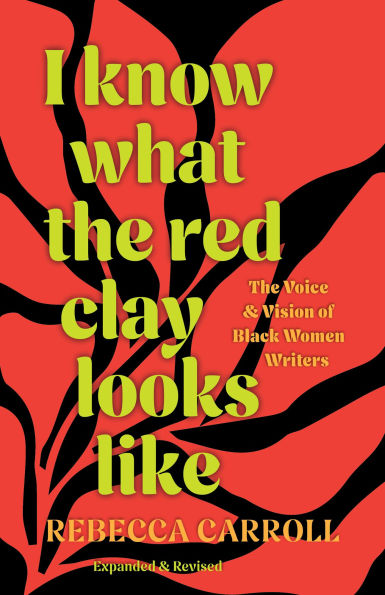Home
I Know What The Red Clay Looks Like: Voice and Vision of Black Women Writers (Expanded Revised Edition)
Barnes and Noble
I Know What The Red Clay Looks Like: Voice and Vision of Black Women Writers (Expanded Revised Edition)
Current price: $50.00


Barnes and Noble
I Know What The Red Clay Looks Like: Voice and Vision of Black Women Writers (Expanded Revised Edition)
Current price: $50.00
Size: Hardcover
Loading Inventory...
*Product information may vary - to confirm product availability, pricing, shipping and return information please contact Barnes and Noble
Thirty years after its original publication, this newly imagined edition brings the work and musings of fifteen Black literary luminaries in conversation with a new generation of writers and readers.
The first edition of
I Know What the Red Clay Looks Like
, published in 1994, remains an essential text for readers of Black feminist literature in all genres. Featuring interviews with and excerpts by writers like Rita Dove, Pearl Cleage, Barbara Neely, June Jordan, and others, this indispensable work speaks to the intersections of politics and art-making along the lines of race, gender, sexuality, and class.
Now, writer and cultural critic Rebecca Carroll presents the original conversations alongside personalized introductions by some of the brightest voices in today’s literary world, including Donika Kelly, Safiya Sinclair, Diamond Sharp, and Chanda Prescod-Weinstein, among others. This new edition also includes an introductory poem by Morgan Parker, a foreword by Salamishah Tillet, and a new author’s note. The new contributors carry the torch of the original interviewees’ lives and words with heart, rigor, gratitude, and radical imagination, illuminating how these conversations are about more than just writing—they are about life, relationships, joy, gratitude, wellness, and self-preservation.
is a book unbound by time, lifting up a chorus of past and present voices. Paying homage to a historic lineage of Black feminist writers and their impact on our current literary landscape, it is a book by and for the storytellers, the poets, the playwrights, the dreamers, and all readers interested in what it means to make art within and from marginalized spaces.
The first edition of
I Know What the Red Clay Looks Like
, published in 1994, remains an essential text for readers of Black feminist literature in all genres. Featuring interviews with and excerpts by writers like Rita Dove, Pearl Cleage, Barbara Neely, June Jordan, and others, this indispensable work speaks to the intersections of politics and art-making along the lines of race, gender, sexuality, and class.
Now, writer and cultural critic Rebecca Carroll presents the original conversations alongside personalized introductions by some of the brightest voices in today’s literary world, including Donika Kelly, Safiya Sinclair, Diamond Sharp, and Chanda Prescod-Weinstein, among others. This new edition also includes an introductory poem by Morgan Parker, a foreword by Salamishah Tillet, and a new author’s note. The new contributors carry the torch of the original interviewees’ lives and words with heart, rigor, gratitude, and radical imagination, illuminating how these conversations are about more than just writing—they are about life, relationships, joy, gratitude, wellness, and self-preservation.
is a book unbound by time, lifting up a chorus of past and present voices. Paying homage to a historic lineage of Black feminist writers and their impact on our current literary landscape, it is a book by and for the storytellers, the poets, the playwrights, the dreamers, and all readers interested in what it means to make art within and from marginalized spaces.






